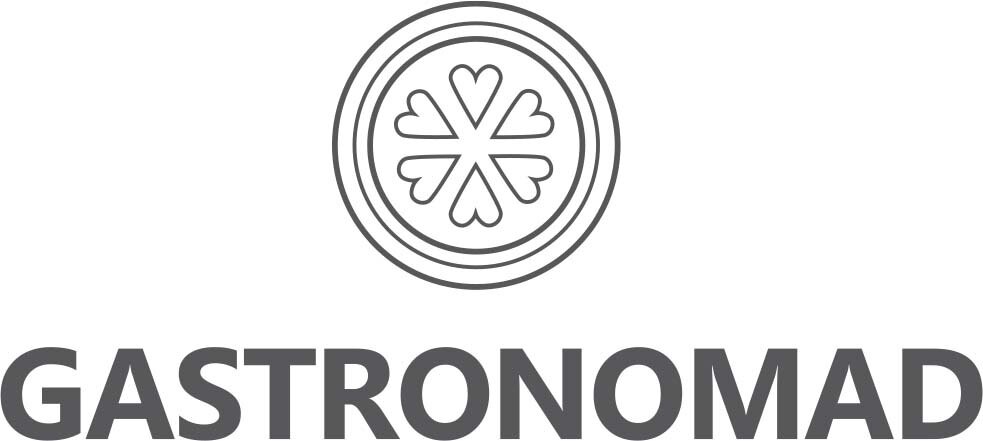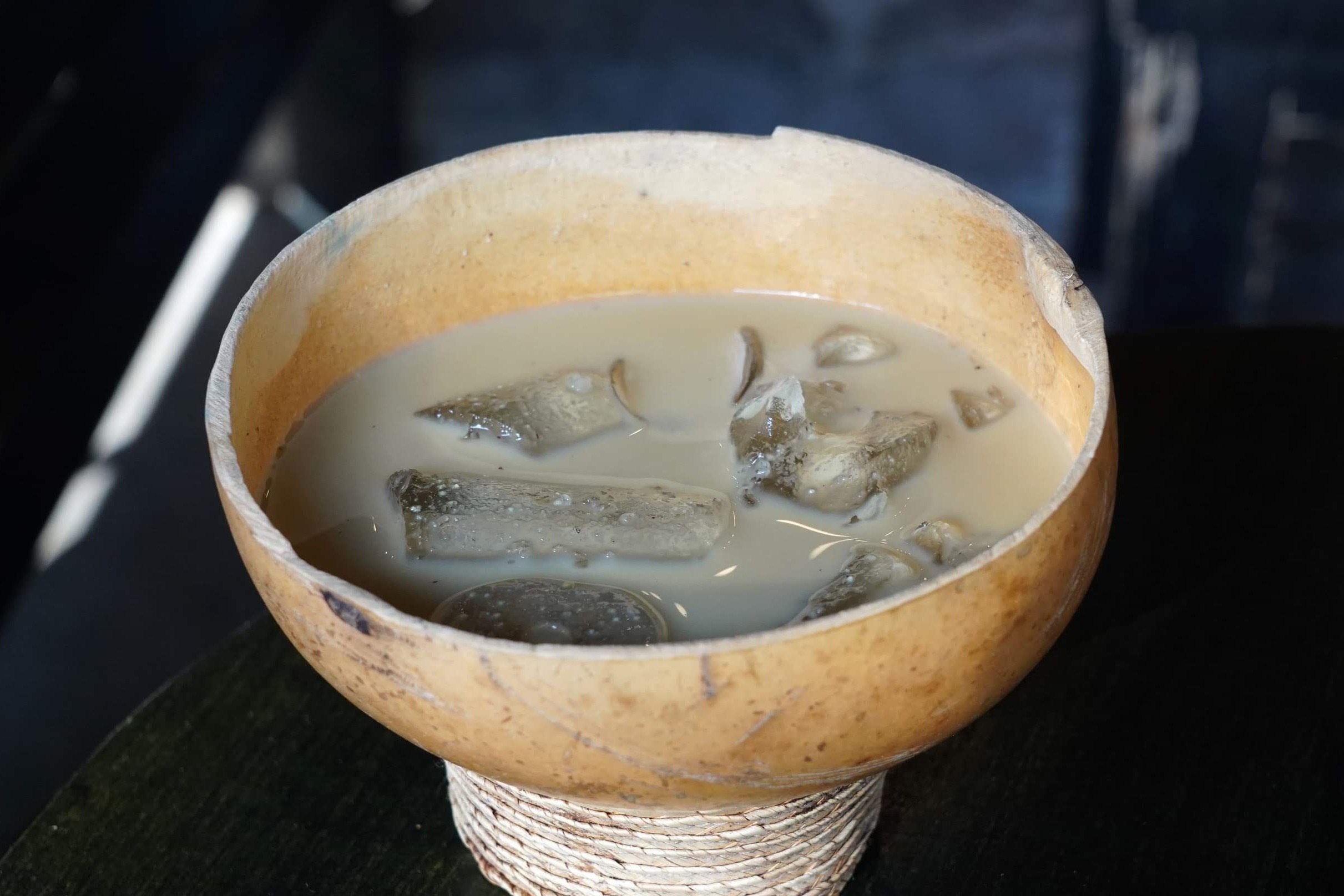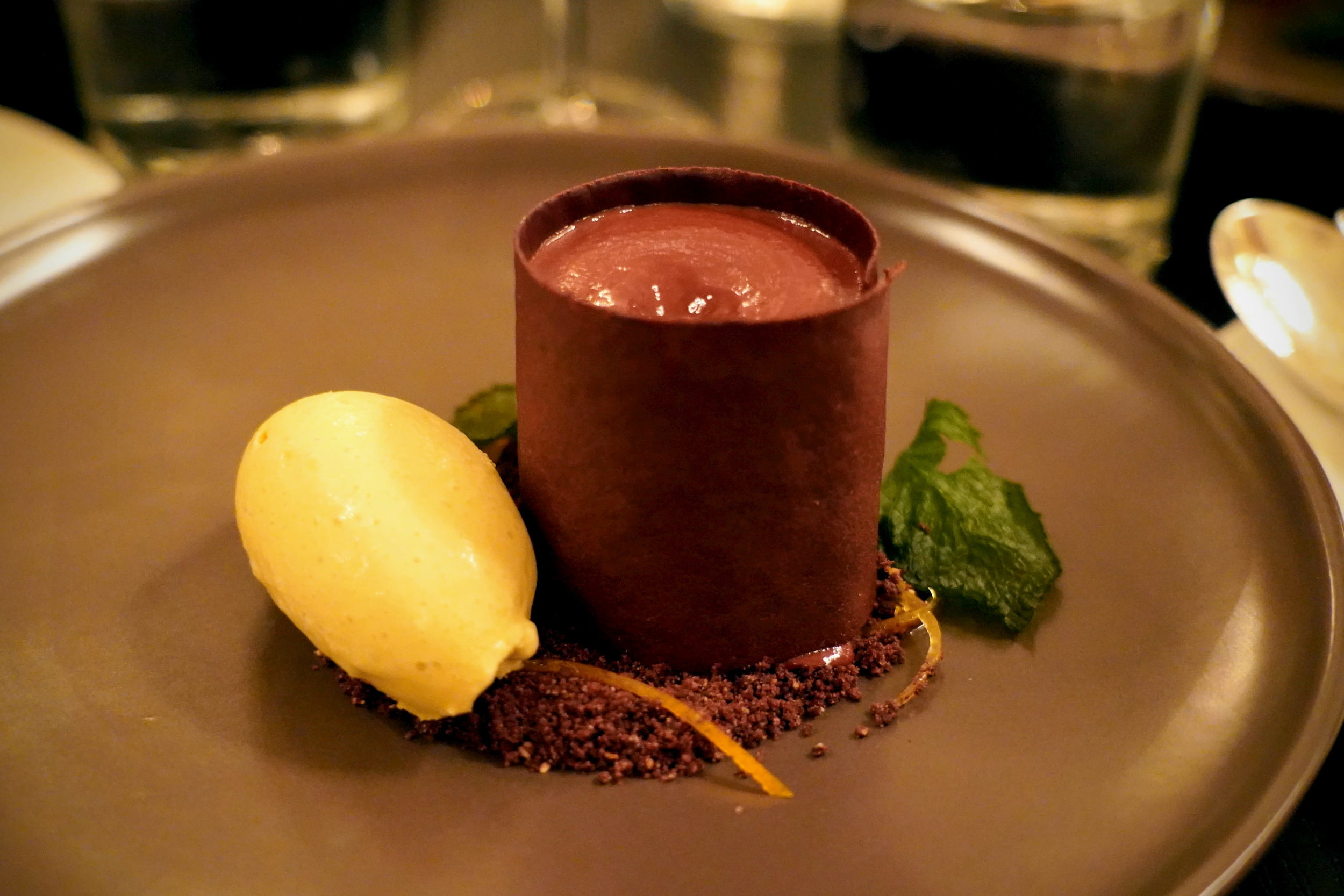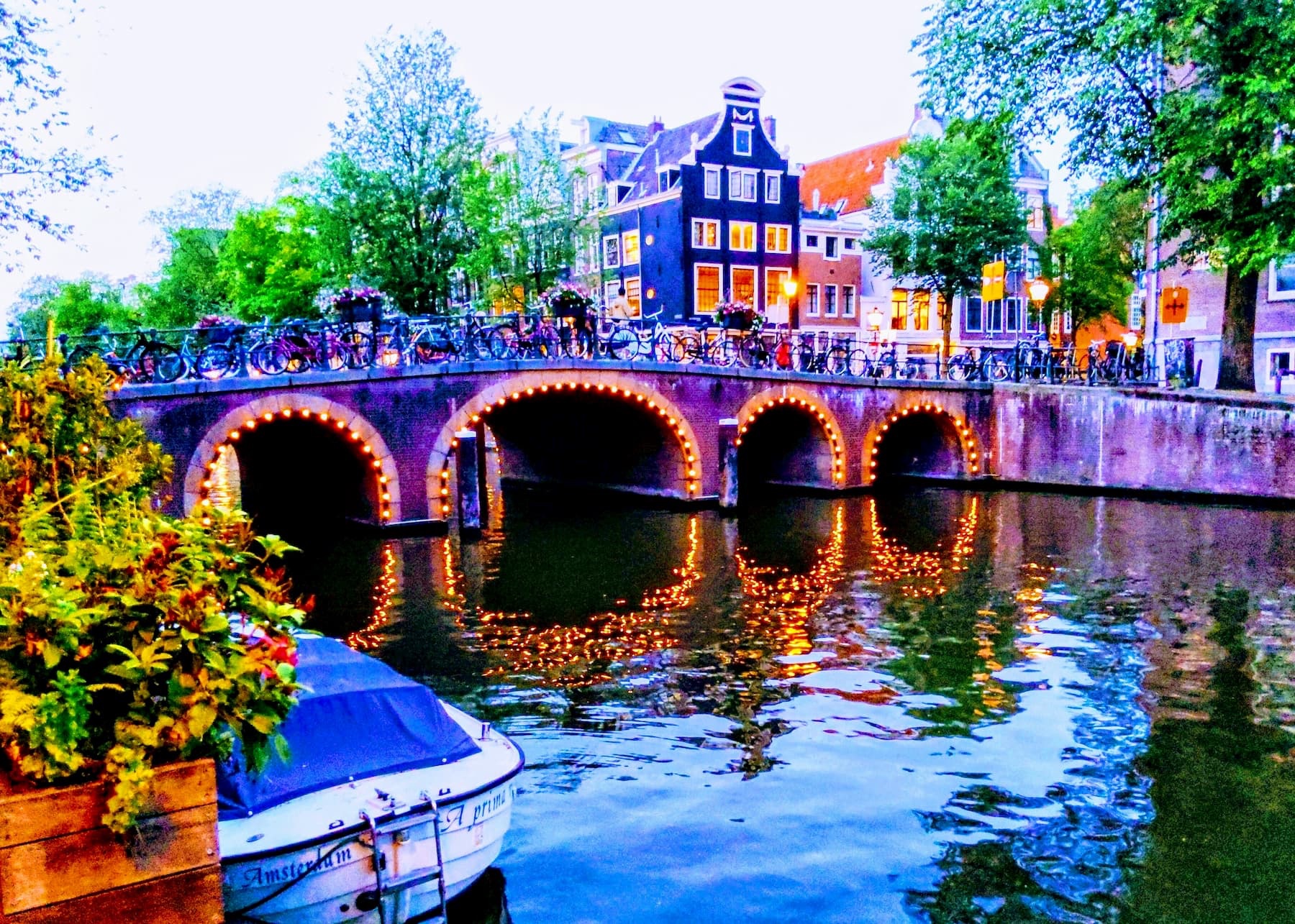We spent a couple days eating our way through Barcelona. We love these rooftop bars, because Barcelona looks so amazing from up high.
My office today: the balcony of our rental in Spain
After around 22 hours of travel (San Jose to Phoenix, Phoenix to London, London to Barcelona, then a drive to here) we finally arrived at the place we’re renting for a month, which is about an hour’s drive West of Barcelona. We’ll live here while we prepare for the upcoming Cava Barcelona Experience!
Hey, L.A. Times, stop putting rice in your horchata!
The L.A. Times food section wrote a fun but misleading fluff piece about horchata under the headline "Stop putting dairy in your horchata."
Cooking Columnist Ben Mims observed that most of the horchata available in L.A. contains dairy -- often canned evaporated milk.
By milk-shaming horchata, Mims implies that the historic and ongoing evolution of horchata, innovation should have stopped with the Mexican innovation of basing it on rice, rather than tiger nut.
He focuses somewhat chauvinistically on the false idea that Mexico is somehow the epicenter and therefore arbiter of global and historic horchata, and mentions in passing that other places happen to have their deviant varieties -- for example, (with false equivalence) he says, the Spanish make horchata from tiger nut and Salvadorans make it using morro, sesame seeds and pumpkin seeds. And he points to rice-based but flavored regional Mexican varieties, some of which use condensed milk.
Mims also disparages the addition of milk as a kind of cheat, a lazy way to achieve creaminess in rice-based horchata.
But this perspective is misleading.
The truth is that horchata has a long history, and every culture that embrace it made it their own.
Horchata began as a drink made from a weed in Africa and the Americas. The plant is called cyperus esculentusk by the scientists, and colloquially chufa sedge, chufa nut, nut grass, yellow nutsedge, tiger nut sedge, tiger nut, edible galingale, water grass or earth almond.
Plants in the tiger nut family were used as a food source by Native Americans, Africans and others at least 9,000 years ago. But where did the orchata Mims is drinking in L.A. come from?
Americans got horchata from Mexico.
Mexico got it from Spain.
Spain got it from Valencia.
Valencia got it from North African Muslims (the "Moors").
The “Moors” got it from Egypt.
The Egyptians got it from sub-Saharan Africans.
They still drink it in West Africa, where it's usually known as kunnu aya.
(Our word "horchata" comes from the Valencian word "orxata." Because of New World bastardizations, the Valencians now call it "horchata de chufa" to differentiate the newer innovations.)
Everybody changed it. The Moors or Valencians probably added sugar and cinnamon to the tiger nut drink.
Mexicans and Central Americans made it without tiger nut (opting instead for rice, morrow and other ingredients).
Various countries like Puerto Rico and Venezuela added sesame seeds.
Ecuador makes pink horchata using flowers and herbs.
And both Mexicans and Americans started adding milk and other ingredients and flavorings.
Of all the changes made to this African drink by Europeans and Americans, by far the biggest "bastardization" wasn't the milk, but the rice.
In fact, it's reasonable to suggest that any drink not containing tiger nut isn't even horchata, but something else entirely that is erroneously called horchata.
Regardless of nomenclature, horchata's journey is just like any other food's journey, traveling across geography, time and culture and evolving as it goes.
For the record, we've tasted horchata all over America, Mexico, Central America and Spain -- especially in Valencia -- and our favorite is Salvadoran horchata made with morro, which is flavored with cinnamon, nutmeg, coriander seeds and allspice. But we also try Mexico City’s best rice-based horchata (pictured) during our Mexico City Experience.
Either you believe that horchata is by definition made with tiger nut, or you believe that a drink called horchata can be made with any crazy thing, including milk.
The idea that "proper" horchata is made with rice but that the addition of milk is illegitimate is just ignorant and misleading.
Please try harder, L.A. Times.
New Gastronomad store on Amazon!
People are always asking us what luggage, electronics, camera and miscellaneous we use. We’ve been nomadic for 13 years, and live out of two backpacks. Everything we own is carefully chosen for durability, functionality and usability. So check out the new store on Amazon, where you can buy everything we recommend. (Note that as an Amazon Associate I earn from qualifying purchases.)
Wine tasting in Barcelona
This photo was taken at a natural-wine tasting for sommeliers in Barcelona during our first Barcelona Experience. The tasting was a wonderful event with cool people at an amazing venue in the city.
We love wine tasting, and we're planning some fun and surprising wine tasting in Barcelona and the nearby cava county (they make a lot more than cava!) at the upcoming Cava Barcelona Experience, which is now only one month away!!
Our favorite country is wine country
Wherever we go in this world, we always seek out the places where the small, old wineries and vineyards are.
Wine countries, whether they're in Europe, Asia, Australia or the Americas, are always beautiful, and they also tend to have great food.
Because wine is big business, agri-giants are growing grapes on vast, industrial vineyards where grapes really shouldn't be grown. You see them springing up in California in the Central Valley, and in the vast agricultural space between the Napa/Sonoma wine country and the Santa Barbara/Santa Ynez wine country. Not beautiful.
But in the places where vineyards are small, and exist among with homes, small towns and other kinds of agriculture, they're always beautiful.
(This vineyard happens to be on the Prosecco Road north of Venice in Italy, where we do our Prosecco Experience. )
How to eat truffles
My favorite way is: mild French cheese, freshly shaved truffle, extra-virgin olive oil, sea salt, plop it in your mouth, repeat.
During our Provence Experience, we try fresh truffles every which way: truffle pizza, truffle on soup, truffle and farmer's cheese on toast, truffle on pastries -- we even put truffle oil on our truffles.
Looking forward to a Venetian Autumn
They make prosecco out of grapes that can tolerate, and in fact need, extreme weather conditions. Glera grapes love South-facing and steep slopes, very strong wind, near freezing temperatures in the Winter and heat in the summer. It's always beautiful in the Prosecco Hills, but the region gets real weather.
Autumn in Veneto, however, is extremely pleasant and beautiful -- especially so because it's a rare spot in Italy where the food, wine and scenery are magnificent, but the tourists haven't discovered it yet. (Or maybe the tour busses can't handle the narrow, winding lanes and steep hills.)
Yes, Venice itself is the poster child for overtourism. But the rest of Veneto is largely undiscovered by the Instagram set. That's one of the hundred reasons why we love hosting our Prosecco Experience.
Making traditional couscous on a farm in Morocco
Couscous is one of the many culinary gifts of the Berbers. It's tiny balls of crushed durum wheat semolina traditionally cooked with the steam of the meat and veggies that it will be served with. Commonly made on Friday, you eat it communally, with everyone digging with a spoon into a huge plate of couscous in the middle of the table. It's delicious with a little buttermilk, which you pour on the portion you're eating from.
(During our Morocco Gastronomad Experience, we make couscous traditionally and from scratch, and enjoy different regional varieties as we caravan across Morocco.)
Could this be the perfect travel coffee kit?
A company called Pakt has successfully Kickstarted and will soon go into production with a product called the Pakt Coffee Kit. This looks to me like the perfect travel coffee product.
Open the case and pull out the cylindrical kettle, which sits on a plugged-in base like a regular electric tea kettle. Inside the kettle is nested two containers, one that serves as a giant coffee cup, and another that holds your coffee beans or coffee grounds.
A pour-over cone expends out with a clever design, so that when it’s collapsed, it fits inside. This is made of metal, rather than silicon or some other material usually used with collapsible food and coffee products.
The Pakt Coffee Kit is scheduled to ship by the end of the year for $189.
Why Barcelona is my favorite place to drink vermouth
Good vermouth is a delicious, refreshing and delightful beverage that's misunderstood, abused and maligned. The drink is also associated with Italy, or maybe France. But I think that in the last few years, Barcelona, Spain, is the best city to drink vermouth. (And, of course, we'll be drinking Barcelona's very best vermouth during our Cava Barcelona Gastronomad Experience.)
I'll tell you why in a minute. But first, let's talk about vermouth itself.
Vermouth is a fortified white wine flavored with botanicals. The "fortification" involves the addition of alcohol (brandy or neutral spirits) to bring the level to at least 14.5% in Europe or 15% in the US. (By definition, vermouth is at least 75% wine.)
The name "vermouth" comes from the French pronunciation of the German word for wormwood (wermut) -- and wormwood is one of the few universal ingredients in good vermouth.
Fortified, botanical wines have existed in China for millennia and Europe for centuries, mostly as a medicine. But Vermouth as we know it today was invented in mid-18th century Turin, Italy. That Italian invention was a red vermouth. Later, white and dry vermouth was developed in France.
Vermouth can be sweet or dry -- or, more recently, extra-dry white, sweet white, red, amber, and rosé.
Vermouth is used as an ingredient in cocktails, of course. That's the American way. Before World War II, more than half the cocktails commonly quaffed in America contained vermouth as an ingredient. And Americans even drank it neat. But the war stopped imports of vermouth from Italy and France, and Americans lost touch with it.
It's still a necessary ingredient in the quintessentially American cocktail: the martini. Interestingly, the original martini used sweet vermouth, but over time a dry martini with dry vermouth became the preferred martini. Use of the term "dry martini" gradually changed from meaning "dry vermouth instead of sweet" to meaning "a lesser amount of dry vermouth instead of the normal amount of dry vermouth.")
Cocktail books list more than 200 cocktails containing vermouth, mostly dry vermouth. As a result, most Americans think of vermouth as a cocktail mixer exclusively.
Many people think they don't like vermouth, but only because they've never tried the good stuff. They've been exposed only to the mass-market industrial brands, or they've tried old vermouth in the back of someone's liquor cabinet or sitting with the spirits at a bar (which destroys it) -- or both.
Once you open a bottle of vermouth, the clock is ticking, and should be refrigerated, and also consumed within a month or two. (Vermouth is commonly ruined because people believe it to be -- and handle it as -- a spirit. In fact, it's white wine and should be treated as such -- drunk cold and young and soon after opening.)
Vermouth is normally made with Clairette blanche, Piquepoul, Bianchetta Trevigiana, Catarratto or Trebbiano grape varieties. Non-white vermouths are also usually made with white wine, but colored by caramelized sugar.
The taste of vermouth is dominated by the proprietary blend of botanicals and other ingredients used by the maker, which may include wormwood, cloves, cinnamon, quinine, citrus peel, cardamom, nutmeg, marjoram, chamomile, coriander, mugwort, sagebrush, juniper, lavender, holly thistle, hyssop, gentian, ginger, black elder, anise, iris root, apple brandy, honey, cinchona bark, sweet flag, licorice root, cascarilla, angelica root, lemon peel, lime peel, bitter orange, bergamot orange peel, pomelo peel, oregano, dittany of Crete, gallic rose, st. john’s wort, honeysuckle flower, kieffer lime leaves, sage, star anise, cinnamon bark, cardamom, tonka bean, vanilla, allspice and many other ingredients.
While vermouth "manufacturing" happens predominantly in Italy and France, the vermouth "revival" is happening strongest in Barcelona. Spanish vermouth tends to be less bitter and taste sweeter, even though it also tends to have less sugar.
Personally, I think Barcelona is the greatest city in the world for enjoying vermouth. Every neighborhood seems to have a vermouth bar -- some of which are old and fancy; others are literally two stools on the sidewalk. Many serve their own house-made vermouth from a tap, and it's often cheap, as little as 2 Euros per glass, which comes with snacks, such as potato chips, olives, anchovies, shellfish or pan con tomate.
The Spanish way to drink vermouth is neat or on the rocks with an olive, a slice of orange or lemon and, perhaps, a splash of soda, before lunch, before dinner or after church on Sunday (many Spaniards have stopped going to church but continued the Sunday vermouth tradition). Vermouth is usually consumed as a very social "first drink of the day." The pre-dinner vermouth session can last two hours and signals the end of the day and the beginning of the evening.
And it's this ritual, combined with the enthusiastic house-made vermouth renaissance in Barcelona, that makes the city so great for vermouth. To drink vermouth at the right time in the right place is to join the locals in an extremely enjoyable ritual.
I'm really looking forward to sharing my favorite vermouths and vermouth bars during our Cava Barcelona Gastronomad Experience!
Barcelona at night is another world!
I'm really looking forward to the upcoming Cava Barcelona Gastronomad Experience, which is 5 nights and six days of pure Catalonian coolness -- food, wine, vermouth, cheese, tapas and breathtaking scenery in the Cava wine country.
But one singular experience is to find out what it's like to go deep inside Barcelona at night. The bars, streets and alleys of the Gothic Quarter are another world, unlike anything anywhere.
We're going to take our small group to our favorite hidden restaurants, dive bars and secret spots, where we'll eat and drink into the wee hours.
Just once in your life, you've gotta experience Barcelona the way we do it.
Come experience Barcelona inside and out!
We're so excited about our upcoming Cava Barcelona Gastronomad Experience (which happens September 2 through September 7)!
Everybody's heard about Barcelona -- the unique and legendary city of Gaudí and Domènech i Montaner, the capital of Catalonia, and the best place in Europe to eat and drink all night long.
But fewer people know about the nearby Cava wine country -- a breathtakingly beautiful land of vineyards and wineries and amazing food.
During our Cava Barcelona Experience, we'll take you deep inside both the city and the country. Our small group of friends (including you!) will skip all the tourist traps and immerse ourselves in the real Barcelona that most people never see.
From a beautiful home in the Cava country, surrounded by vineyards, we'll explore the region's most intriguing and secret food spots, most authentic markets, restaurants, artisan shops and other hidden gems. We'll enjoy wine tastings, cheese tastings and more with Barcelona's top experts. And we'll learn how to cook -- and eat! -- Catalonia style.
We'll experience the true bohemian side of Barcelona, enjoy tapas of the highest order at the best local spots and explore the musical rhythms of flamenco. We'll talk to cultural experts to enlightened us about all things Catalonia.
You'll not only learn and taste and explore, but together we'll honor those who have kept the flame of ancient Catalan traditions, food methods and agrarian skills alive.
Best of all, every day of The Experience will be filled with delightful surprises, incredible scenery and unforgettable gatherings with friends.
If you think you or someone you knows is interested in enjoying the culinary and wine-tasting experience of a lifetime, click here or just send email to: mike@elgan.com
Happy National Chocolate Day, everybody!
During Gastronomad Experiences, every day is National Chocolate Day, no matter which day and no matter which nation. This mind-blowing confection is from our most recent Prosecco Gastronomad Experience. We love chocolate!
Your own private food and wine travel trip of a lifetime!
We currently host unforgettable Gastronomad Experiences in Provence, Morocco, Barcelona, Mexico City and the Prosecco Hills.
But if you have a group of 4 or more, we can plan an exclusive Experience just for your group! This can be your family vacation or reunion or company event, filled with magical gatherings, dinners, picnics, tastings.
If you're interested in your group having the time of your lives in one of the most beautiful places in the world, just go here.
We even said "good-bye" to the lavender!
We just concluded our wonderful, delicious, joyous Provence Gastronomad Experience. We just landed in the US, and miss France already. The hardest part is saying “good-bye.” We said it to our wonderful Gastronomads, who joined us for a week of delicious fun. We said it to our dear French friends. We said it to the medieval villages, the breathtaking valleys between and the wonderful food and culture of Provence. And we also said “good-bye” to the lavender, which surrounds the farmhouse that makes our home during The Experience.
Our little street in Provence
Today is the first day of summer, which France celebrates with music everywhere. We took a few steps to check out a band at the end of the street. Amira ran into friends, and I retreated back into our apartment. But I did snap this pic of her walking back down our little street.
Sampling some local brew in Provence
We’re living at this moment in little town in France, which we love. It’s called Pernes-les-Fontaines.
Technically, it’s a village of fewer than 10,000 people in the region of Provence-Alpes-Côte d'Azur in the Vaucluse Department, the Carpentras Arrondissement and part of the intercommunalité of Les Sorgues du Comtat.
Forget all that. It’s a town in France, and one of extreme beauty and charm. (Our apartment is 40 feet away from a moat! Should the Visigoths try to sack the Lower Rhone again, we’ll be ready this time!)
Anyway, we enjoyed a lovely dinner last night with two wonderful friends of ours — an amazing couple, Olivier and Aurore, engineers both. (Aurore owns a gamification training and education company, and Olivier designs technology hardware for education.) Together, they have created an open maker-space called the FabLab, where all are invited to come and learn, build, create, collaborate, explore ideas and make stuff.
While checking out their cool new space last night, Olivier pointed to a partially disassembled washing machine, which he said would be converted into a beer brewing system. Incidentally, he mentioned, the owners of a local brew pub expressed intention to teach the craft of beer brewing to anyone interested at the FabLab. They told us about the brew pub, called Bar à Bières La mousse Gourmande, which we had passed walking by many times, but of which gave no notice.
With time short today, we ventured in to sample some beer. Which was excellent. We loved everything about this place. A few good house-made craft beers on draft. A great selection of good beers by the bottle (including Lagunitas, for fuck’s sake). And really nice people.
Magical Amsterdam
This was our view as we sampled Dutch craft beer at sidewalk, canal-side tables, first with the setting sun, then with the full moon. Amsterdam is a damn nice place for doing nothing.
Provence is meringue heaven!
Amira has a meringue problem. Which is to say that she's gained a reputation in restaurants in multiple cities as a meringue maniac. (She'll sometimes call ahead to make sure they've got the hard stuff, and that it's very fresh.)
One restaurant in Mexico City removed an item from their menu literally called "Too Much Meringue," probably because it had too much meringue. Now they make it only for Amira.
Meringue is simple; it's basically whipped egg whites and sugar and sometimes lemon juice, vinegar or cream of tartar. They make it differently in France, Italy and Switzerland.
French meringue is different from Italian or Swiss meringue in that the egg whites are still raw, which is why French meringue is good only after being baked or cooked. Italian and Swiss meringue can be used as frosting or in other desserts without being baked, and is more stable over time.
French meringue itself is easier to make. But the desserts made with that meringue can be hard to make, and require a lot of pastry kung fu.
We're in France doing our last-minute preparations for The Provence Gastronomad Experience -- one spot for a couple just opened up!). So Amira is in French-meringue heaven!




















